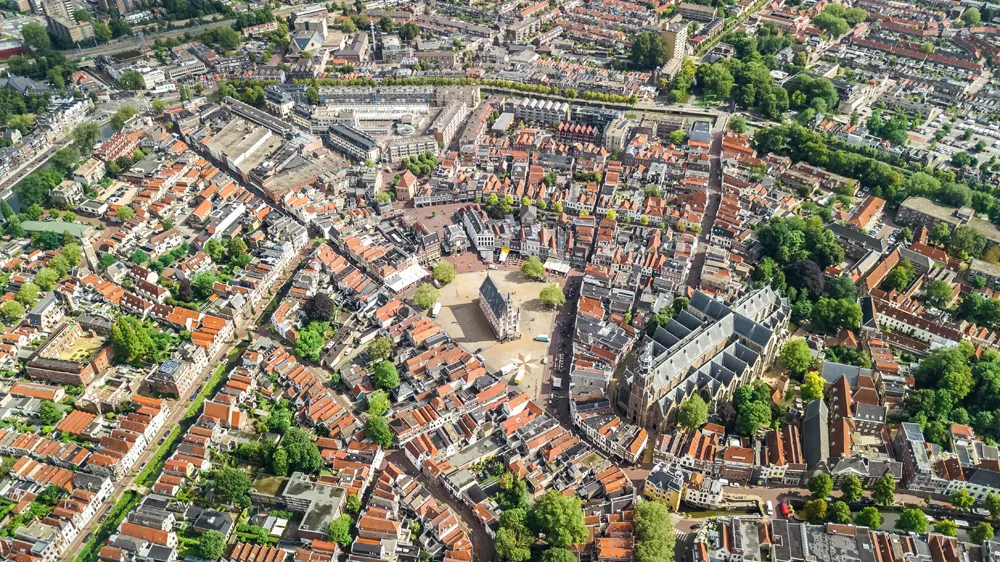
The way we move around is changing. Automation and new mobility platforms are set to make travel more accessible and straightforward – at least in theory. To get from place to place still requires money, however, and if you don’t have cash, you won’t be able to partake of the advantages that technology and new services are bringing.
This is where the concept of universal basic mobility (UBM) comes in: in essence, this is the idea of offering financial support to individuals to make transit more accessible, particularly for low-income users. City, local or regional authorities can target people who might not have access to the financial opportunities which good transport can create. By giving them the means to use transport services, proponents argue that their quality of life will improve, education and employment prospects will open up and society as a whole will benefit.
UBM has its roots in the better-known universal basic income (UBI), which has been trialled in countries as diverse as Norway, the US and Brazil. Citizens receive a set, regular amount of money regardless of their means, thus creating a watermark below which income will never fall for everyone. The pros and cons are well-rehearsed: since UBI is not means-tested, it takes money from poorer people and removes incentives to work; on the flipside, UBI reduces inequality and poverty, and provides an income for work – such as caring for relatives – which is traditionally unpaid and is often carried out by women.
Some of these same arguments are swirling round the universal basic mobility debate. Approaches tried so far include issuing pre-paid credit cards that can be used for transit.
Transportation options
However, Shared-Use Mobility Center CEO Benjamin de la Peña wonders if money is enough in itself. Should UBM be about just receiving cash to pay for transportation? Or is it more helpful to look at it as improving access to “a whole bunch” of mobility options?
“If there are no transportation options, then having money is not going to be useful for the people that need to get around,” de la Peña says. “I think that’s the conceptual and logistical hurdle we get over with universal basic mobility - because what access do people have to transportation options apart from the private car?”
De la Peña explains that current infrastructure and systems – particularly in the US - favour private car use and that people use their vehicles for half-mile trips to a store or for journeys under three miles to get to a school, for example.
To realise UBM, the “full spectrum of modes” is necessary: this includes newer innovations such as micromobility and cargo bikes – but also the provision of very basic infrastructure such as safe pavements for short walks, he points out.
Micromobility is a key component of the UBM schemes trialled so far. For instance, California’s Oakland Department of Transportation distributed 500 pre-paid debit cards, each with $150 available, so residents can buy passes for transit, bike-share and electric scooters. Another scheme in Bakersfield, California, is giving 100 residents access to free public transit along with Spin’s electric scooters and bikes; and meanwhile authorities in Pittsburgh, Pennsylvania, are also piloting 100 people with six months’ worth of transit subscriptions and shared mobility services.
De la Peña thinks one of the major pitfalls UBM schemes must avoid is making public transportation compete with shared mobility. “I think that’s the wrong conflict,” he insists. “Really, the conflict is the private car and our dependency on it.”
He recognises that while more public transportation is needed, especially those operating on fixed routes, it does not answer everyone’s needs at all times and in every eventuality. But de la Peña argues that UBM schemes need to focus on taking people away from private cars, otherwise “they’re fighting over the small slice that public transportation gets, and we need to enlarge that slice”.

Providing more options is crucial. Therefore, a key metric for a successful UBM scheme would be its ability to fulfil mobility needs while also being widely available: “If you run with those two, then it’s universal and basic.”
Making it work
De la Peña maintains the terminology around UBM and its related issues is vital. “For instance, a term du jour is ‘the 15-minute city’, but that only works if every part of a city had that,” he explains. “It doesn’t work for workers who need to travel - because you can’t have the regional hospital or the factory in every neighbourhood. So we have to be careful about the point of view and the exclusionary ideas around it. The good thing about the ‘universal basic mobility’ handle is that it forces us to think about who needs the mobility, who doesn’t have it now and how do we provide it.”
Like Mobility as a Service (MaaS), UBM can mean different things to different people. De la Peña points out that what is basic for the downtown worker may not be considered basic for the caregiver who needs to bring children to kindergarten. But at the core of the issue is that more mobility options are needed.
“MaaS is mostly this idea that you don’t have to buy something, but for most people that don’t own a car, mobility is [already] a service; it’s a very bad service in most places, but it is a service,” he suggests. “And you can’t get to MaaS if you don’t have enough services, because otherwise it’s just an integrated payment system where you’re still going to have to wait 30 minutes for the bus and that’s ridiculous.”
De la Peña does not know if the term UBM is gaining as much traction as its adherents would like. But he is confident that more cities and regions will try to provide more transportation options, particularly because of the challenges created by climate change. The drive to decarbonise transportation and increase sustainability has led cities to investigate and enable active travel modes such as walking and cycling, with micromobility options increasingly ubiquitous on streets worldwide.
Modal experimentation
De la Peña points out that 60% of trips are below three miles, creating a situation that is not sustainable – even if you gave everybody an electric vehicle: “In the US, I think the overall amount of rebates you could get for buying an electric car with federal and state and local is about $7,500 or so for a $32,000 car. How’s that going to work for low-income households?”
He predicts there will be more experimentation with providing options such as on-demand transportation and more ride-sharing systems. “And that, if you wanted to get to universal basic mobility, is this skeleton for it which will allow you to provide the subsidies you need for particular people,” he suggests. “What we essentially need to correct is a system that is orientated towards and prioritises private car use.”
De la Peña feels that UBM and UBI both have merit but stresses that “we have to be clear that it’s not about taking away support”.
“Low-income households need more support than just money, so having universal basic income is not going to translate into getting better schools in your community and it’s not going to translate directly into better social services. So universal basic income is great, but we don’t think of it as a panacea and it’s the same thing with universal basic mobility,” he concludes.
In principle, then, UBM appears to break down the barriers for accessing transport. However, to be truly successful, cities and regions that intend to go down this road may need to place access to shared mobility and tackling private car use near the top of their agendas. ITS










